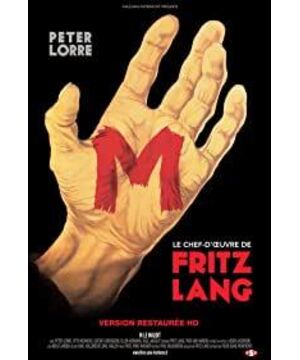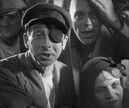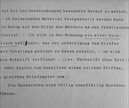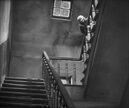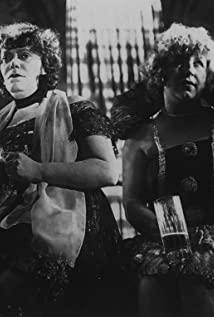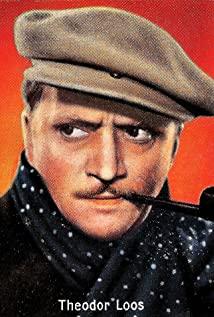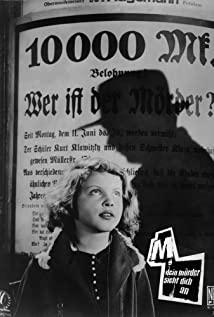Although the first feature film with sound was "Jazz Singer" in 1927, the filmmakers had no idea how to use the sound that had just appeared at that time; they either used it as an auxiliary picture narrative/visual narrative subsidiary or It was used as a substitute for the title card-until the appearance of "M is the Murderer" in 1931. This film's use of sound is undoubtedly groundbreaking and revolutionary. It taught people how to narrate the voice independently in the film for the first time, such as:
——Used as a sound bridge. At the beginning, we heard the sound before the child was playing the game, and after Elsie was walking on the road, we heard the whistle before the car entered the painting. Later, when M came out of the little girl’s flower shop, people heard the door before they even entered the painting. Ringing, and finally, when M was arrested and entered the People's Public Interrogation, there was also a sound at the stairs first, and then I saw the picture of M being arrested.
-Letimotif used as a character. "In the Palace of the Mountain Demon King" is a song M often hums. When this voice rang, we knew it was him. There is a scene in the film where the camera follows the little girl (not Elsie, but the second girl who appears after her) while looking at something in a store, we hear the iconic song, and the camera is getting closer to the little girl, these Together, we know that M is approaching the little girl, creating a sense of suspense. Sound plays an indispensable role in the production of this sense of suspense.
——Used to describe emotions (this effect is actually not so innovative, but the specific usage of "M" is still quite novel). There is a scene in the film: M is staring at the contents in front of the glass of the shop. At first, the background sound was the noisy sound of a siren, but when M started looking for prey on the glass (a little girl was found behind through the reflection of the glass), the background sound was quiet. When he turned and prepared to act, the noisy background appeared again. The silence here means that he has entered the inner world and began to focus on finding "prey"; the switch between noise and silence is that he is hesitating in his heart whether to kill. Including M humming "In the Palace of the Mountain Demon King" when he went to the coffee shop behind M, it was actually a manifestation of his inner struggle. (This song is very cheerful, so it should be used by M to escape the idea of murder.)
——Used as a space outside the painting. In the People’s Trial Play, there are many extra-picture spaces created by the out-of-picture sound when the camera is aimed at M. We hear all kinds of people’s laughter, noise, cursing, etc.
In addition to this biggest highlight, the film is extremely high in lighting, shadows, and scenery.
——The low-key lighting of German expressionist movies is used for lighting. The background is very dark and the contrast of light and shadow is high, creating an uncanny atmosphere
——Shadows such as the black shadows that appeared on the wanted order when Elsie saw the wanted order at the beginning (also M’s first appearance)
——The setting and lighting follow German expressionism and are full of subjective emotions. For example: at the beginning, Elsie's mother kept yelling her daughter's name when she came back. The disturbing empty sequence of shots (including complicated and blurred stairs, empty clothes rooms, leather balls, balloons, etc.); the ending one The abandoned brewery where M hides is also dilapidated and weird, echoing the feeling that M gives.
——There are many others. For example, when M just entered the People's Court, he stretched out a hand from the other side of the screen when he was arguing. It was a little weird and scary.
View more about M reviews


